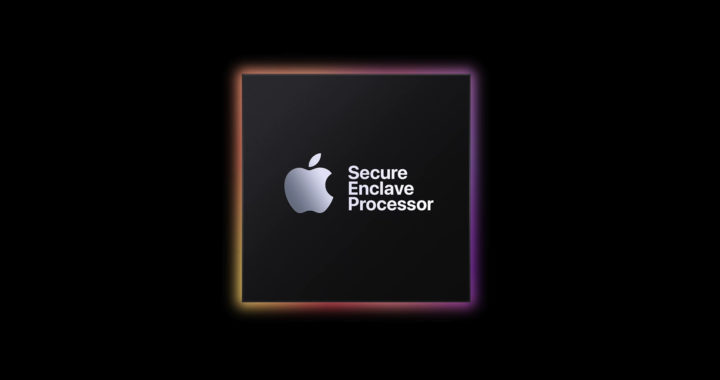There is a hardware component that runs a subsystem within several systems-on-a-chip from Apple. These include the A-series chips that power the iPhone and some iPad and the M0series of chips that power Mac and iPad devices. This component is also found in other Apple Silicon used in Apple TV, Apple Watch, and HomePod. It is called the Apple Secure Enclave. This dedicated processor or coprocessor was first introduced in 2013 in the Apple A7 chip of the iPhone 5S. It is a component integrated within a single system-on-a-chip. It is responsible for handling sensitive operations relating to security and privacy.
Understanding What Secure Enclave Is and How It Works: Purpose and Mechanism
What: Definition and Purpose
Apple calls this hardware component a “secure enclave” because it is a dedicated and separated component for handling security and privacy operations within a particular device. It is a physically integrated component but it is technically isolated from the entire system-on-a-chip. The Apple Secure Enclave is specifically a processor with a subsystem of its own. Some call this subsystem a separate and smaller operating system.
The Secure Enclave Processor Operating System or sepOS is a lightweight operating system or firmware based on a customized version of the L4 microkernel. It runs exclusively on the Secure Enclave processor and provides a secure and isolated environment for security-sensitive operations. The set of security features it provides includes secure storage and processing of sensitive data, secure boot, and secure firmware update.
Nevertheless, based on the aforementioned definitions, the Secure Enclave is a hardware-based security solution from Apple for processing and storing sensitive user data such as passwords and biometrics. It uses hardware isolation and encryption to keep attackers from gaining access to sensitive data. Another purpose of Secure Enclave is to verify the integrity of the boot process to ensure that authorized hardware and software can run on the device.
How: Operational Mechanism
It is important to underscore the fact that the Apple Secure Enclave comprises two main components. These are the Secure Enclave processor and the Secure Enclave Processor Operating System. The entire security solution is based on the principles of hardware isolation and cryptography. The processor might be integrated within the system-on-a-chip but it is isolated from the main processor and other coprocessors.
The main processor or the central processor of a chip has no access to the Secure Enclave processor. It has a boot ROM to establish a hardware root of trust, an Advanced Encryption Standard or AES engine for efficient and secure cryptographic operations, and a Memory Protection Engine. The processor runs its own operating system and its entire operations work independently from the rest of the chip and the device.
Sensitive user data like passwords, biometrics, and credit card information are encrypted and stored in a location that only the Secure Enclave can access. The security solution also assigns random numbers to other hardware components like solid-state storage. This means that these components cannot be used outside of the device when removed and attackers cannot replace these hardware components with malicious counterparts.
Advantages and Disadvantages of Secure Enclave: Pros and Cons of this Security Solution
The Secure Enclave is a critical part of Apple devices. Security experts have considered it as one of the most secure subsystems in the world and have praised Apple for its design and implementation.
Below are its specific advantages:
1. Increased Security and Performance
The security solution from Apple makes it difficult for attackers to access sensitive user data even if they gain physical access to the device or its hardware components. Furthermore, because it is a coprocessor, it also improves the performance of certain applications and tasks because security-related processing happens outside the main central processor.
2. Reduced Power Consumption
Another advantage of Secure Enclave is that it can reduce the power consumption of devices. Remember that the processing of operations related to security or data protection and encryption happens outside the central processor. This lessens the processing burden from the CPU and other relevant coprocessors. The specific coprocessor is also designed to be power efficient.
3. Flexible and Simplified Development
The security solution can be used for implementing different security features. It also provides a platform for software developers to develop secure applications or integrate security features within their applications. These developers do not need to worry about the handling of sensitive user data in their software development process.
However, despite the aforementioned advantages, and regardless of its commendable design and implementation, this security solution from Apple has several limiting drawbacks.
Below are specific disadvantages:
1. Hardware Limitations and Non-Universal
Remember that this is a hardware-based security solution. This means that its availability is device-dependent and cannot be added later on unsupported devices. It is also not universal. This can make it difficult to develop applications for devices other than the Apple ecosystem because of the absence of a universal or unified security approach.
2. Limits the Apple Product Ecosystem
Another disadvantage of the Secure Enclave is that it closes or limits further the entire Apple product ecosystem. Apple has been criticized for its walled-garden. The security solution aggravates this issue further by preventing users from replacing some hardware components in their devices like the solid-state storage and the fingerprint or facial recognition sensors.
3. Susceptibility to Security Vulnerabilities
This security solution also has its fair share of vulnerabilities. Researchers have found that the processor has a vulnerability that could potentially allow attackers to access sensitive user data. This issue stems from the specific memory controller operation. Take note that this coprocessor uses a Unified Memory Architecture together with other processors and coprocessors.
